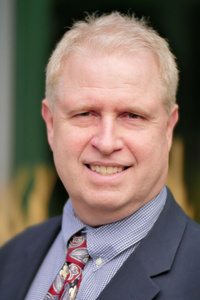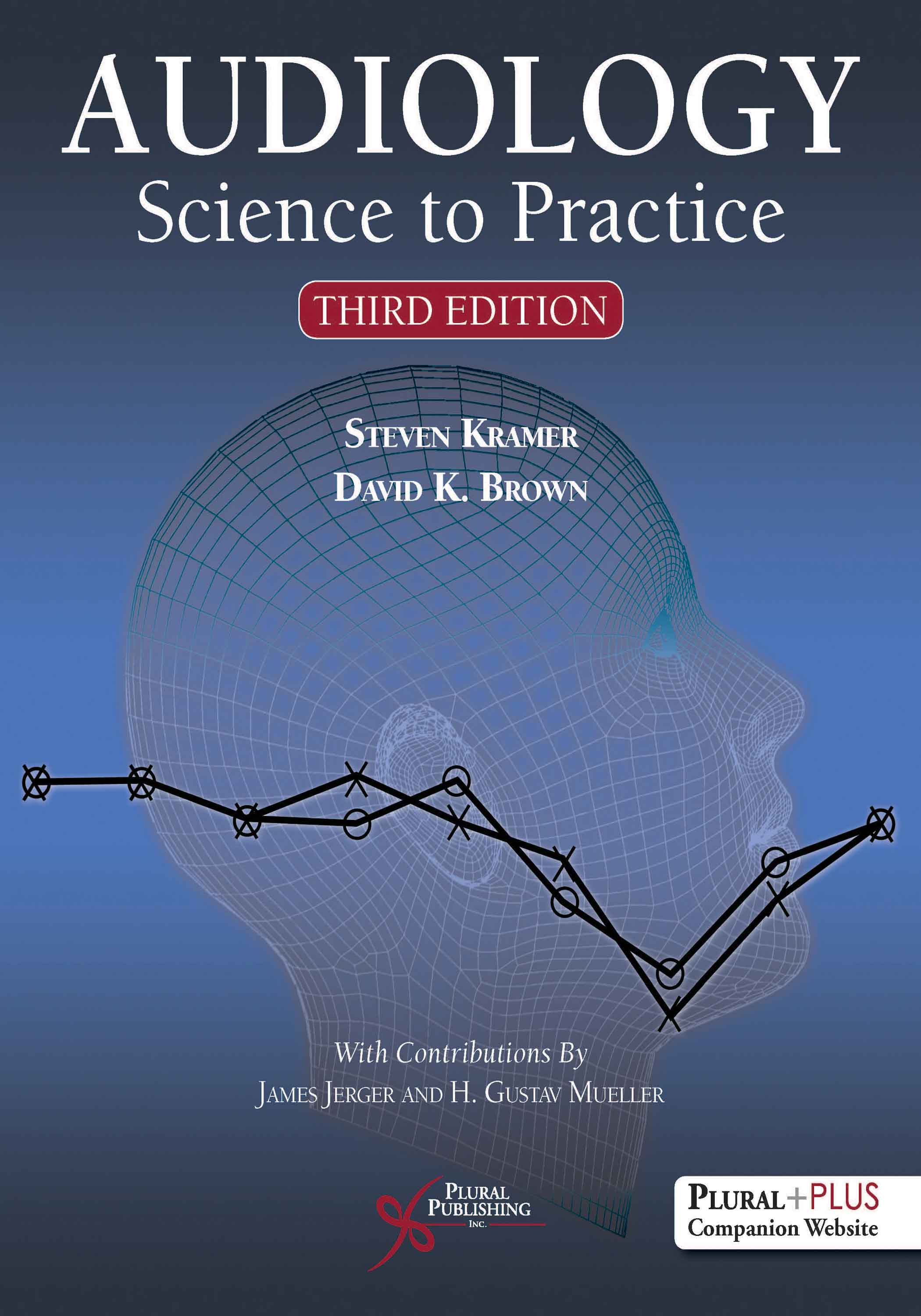
Audiology: Science to Practice.
Third Edition
Steven Kramer, David K. Brown
Details: 424 pages, 2-Color, Softcover, 8.5" x 11"
ISBN13: 978-1-94488-335-5
© 2019 | Available
A new edition is coming in November.
Audiology: Science to Practice, Third Edition is a comprehensive and challenging textbook for undergraduate students in audiology and hearing science, for graduate students beginning an AuD program, especially those who may not have a background in the subject, and for other health care professionals who would benefit by a better understanding of hearing science and audiology practices. This textbook is written in a style that tries to make new or difficult concepts relatively easy to understand. The approach is to keep it readable and to punctuate the text with useful figures and tables.
This textbook seeks to provide a solid foundation in hearing science and clinical audiology, and is an excellent resource for those preparing for the Audiology Praxis Exam. It also serves as a companion to the Audiology Workbook, Third Edition, by Dr. Steven Kramer and Dr. Larry Small. From science to practice, this textbook covers anatomy and physiology of the auditory and vestibular systems, acoustic properties and perception of sounds, audiometry and speech measures, audiogram interpretations, masking, outer and middle ear assessments, otoacoustic emissions and auditory brainstem responses, hearing screening, hearing aids, cochlear and other implantable devices, and auditory disorders supported with expected audiologic data. The reader is also introduced to the profession of audiology and what it means to work as an audiologist. Where appropriate, variations in procedures for pediatrics are presented.
New to the Third Edition
The third edition of Audiology: Science to Practice has been extensively revised from the previous edition. The authors systematically reviewed each of the chapters from the previous edition to expand, update, and reorganize the material to make it even more useful to the student new to audiology, and at the same time continues to be more comprehensive than one might find in other introductory texts on audiology. The authors retained the features that worked well in previous editions, including an easy to read format, key learning objectives, and synopses within each chapter with bulleted highlights for review. Chapters are now organized in a more traditional sequence beginning with information about the profession of audiology, followed by acoustics, anatomy/physiology, and an expanded coverage of clinical audiology. References and figures have been updated, including photos of new hearing instruments and amplification devices.
The book now has a more beautiful 2-color layout.
This edition has four new chapters:
- Chapter 10. Outer and Middle Ear Assessment
- Chapter 11. Evoked Physiologic Responses
- Chapter 15. Implantable Devices
- Chapter 16. Vestibular System
Another substantive change includes a revision to Chapter 14 on Hearing Aids to make it more appropriate for the undergraduate student or others who want an overview of this important part of audiology.
A PluralPlus companion website is also new and includes:
- PowerPoint lecture slides and selected figures for instructors
- Selected resource links for students
- An additional chapter written by James Jerger, PhD on the history of audiology
A COMPANION WORKBOOK IS AVAILABLE!
Audiology Workbook, Third Edition
- Also available is a separate workbook that is composed of an abundance of questions and activities designed as a means for undergraduate and graduate students to reinforce their knowledge of concepts and procedures covered in introductory hearing science and clinical audiology courses. The Audiology Workbook, Third Edition is also a great study resource for the Audiology Praxis Exam.
- ISBN13: 978-1-59756-969-9
Review
"The authors provide a comprehensive introduction to audiology for students and clinicians in audiology and related professions. The textbook has a favourable layout: chapters are organised logically and begin with a set of learning objectives providing a preview of what comes next. Larger chapters are broken up with synopses of content covered and a final summary is provided at the end of each chapter. The layout is helpful for students learning the material for the first time. The style of writing is engaging, especially in the anatomy chapter where authors encourage you to learn by tracing with your own fingers the landmarks on your ear."
—Mary Lynn Hia, MSc, in ENT & Audiology News (September 2020)
Preface
Contributors
Part I. Perspectives on the Profession of Audiology
Chapter 1. The Discipline of Audiology
Chapter 2. Audiology as a Career
Part II. Fundamentals of Hearing Science
Chapter 3. Properties of Sound
Chapter 4. Anatomy of the Auditory System
Chapter 5. Functions of the Auditory System
Part III. Clinical Audiology
Chapter 6. Audiometric Testing
Chapter 7. Audiogram Interpretation
Chapter 8. Speech Audiometry
Chapter 9. Masking for Pure-Tone and Speech Audiometry
Chapter 10. Outer and Middle Ear Assessment
Chapter 11. Evoked Physiologic Responses
Chapter 12. Disorders of the Auditory System
Chapter 13. Screening for Hearing Loss
Chapter 14. Hearing Aids
H. Gustav Mueller
Chapter 15. Implantable Devices
Chapter 16. Vestibular System
Glossary
Index
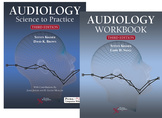
Audiology: Science to Practice, Third Edition Bundle (Textbook and Workbook)
Overview
Audiology: Science to Practice, Third Edition Bundle (Textbook and Workbook) is a comprehensive and challenging textbook and companion workbook for undergraduate courses in audiology and hearing science, and for graduate students beginning an AuD program who may not have a previous background in the subject. It is designed to cover the content of both two-course sequences (Hearing Science and Principles of Audiology) as well as combined courses—providing a level of consistency in presentation. Chapters cover hearing science, diagnostic procedures, an introduction to hearing aids, and extensive coverage of anatomy and physiology of the auditory and vestibular systems. The Workbook focuses on exercises and questions in hearing science and audiology principles and procedures that are beneficial for speech-language or audiology undergraduates and those beginning an AuD graduate program. It is also a great study resource for the Audiology Praxis Exam.
Topics in the textbook include information about the profession of audiology, anatomy and physiology of the auditory and vestibular systems, acoustics, audiometry and speech measures, audiogram interpretations, masking, outer and middle ear assessments, otoacoustic emissions and auditory brainstem responses, hearing screening, hearing aids, cochlear and other implantable devices, and an overview of vestibular function, disorders, and assessment. There is also a chapter describing common auditory disorders, supported with expected audiologic data.
New to the Third Edition Textbook
- Four new chapters: Outer and Middle Ear Assessment (Chapter 10); Evoked Physiologic Responses (Chapter 11); Implantable Devices (Chapter 15); and Vestibular System (Chapter 16)
- References and figures have been updated, including photos of new hearing instruments and amplification devices
- The chapter on Hearing Aids is now more appropriate as an introduction suitable for undergraduate students
- Access to a PluralPlus companion website with PowerPoint lecture slides for instructors, James Jerger's chapter on the history of audiology, and selected resource links for students
The companion workbook is composed of an abundance of questions and activities designed to reinforce students' knowledge of concepts and procedures that are, traditionally, difficult to master. There are questions and activities on properties of sound, such as drawing waveforms; calculating frequencies/periods, amplitudes, and phases; anatomy and physiology of the auditory and vestibular systems; and interpreting audiograms, speech tests, tympanograms, acoustic reflexes, and auditory brainstem responses. There are also questions to reinforce knowledge about hearing disorders, including an entire chapter on basic clinical cases. The activities are comprehensive and designed so that they may be solved with relatively short answers and useful for group discussion. Comprehensive answers are also included for each chapter.
The Audiology Workbook has been extensively revised from the previous edition. This edition updates, expands, and reorganizes material from previous editions but retains the features that worked well, including detailed answers for all of the exercises. More exercises have been added in traditionally difficult areas such as properties of sound, anatomy/physiology, audiogram interpretation/description, and masking. In addition, there are now separate chapters on immittance, OAEs, and ABRs. New to this edition is a separate chapter on vestibular anatomy, physiology, disorders, and assessments for those who wish to learn more about this area of audiology. A new chapter is devoted to the popular case studies found in the previous editions. The case studies have been revised into a more consistent format with answers written similar to how they might be found in a clinical audiology report. The exercises are designed to help students learn how to integrate basic diagnostic test results and relate them to a variety of hearing disorders.
Purchasers of this book receive complimentary access to supplementary materials hosted on a PluralPlus companion website.
To access the materials, log in to the website using the URL located inside the front cover of your copy of Audiology: Science to Practice, Third Edition.
STUDENTS:
To access the student materials, you must register on the companion website and log in using the access code located inside the front cover of your textbook.
INSTRUCTORS:
To access the instructor materials, you must contact Plural Publishing, Inc. to be verified as an instructor and receive your access code.
Email: instructormaterials@pluralpublishing.com
Tel: 866-758-7251 (toll free) or 858-492-1555
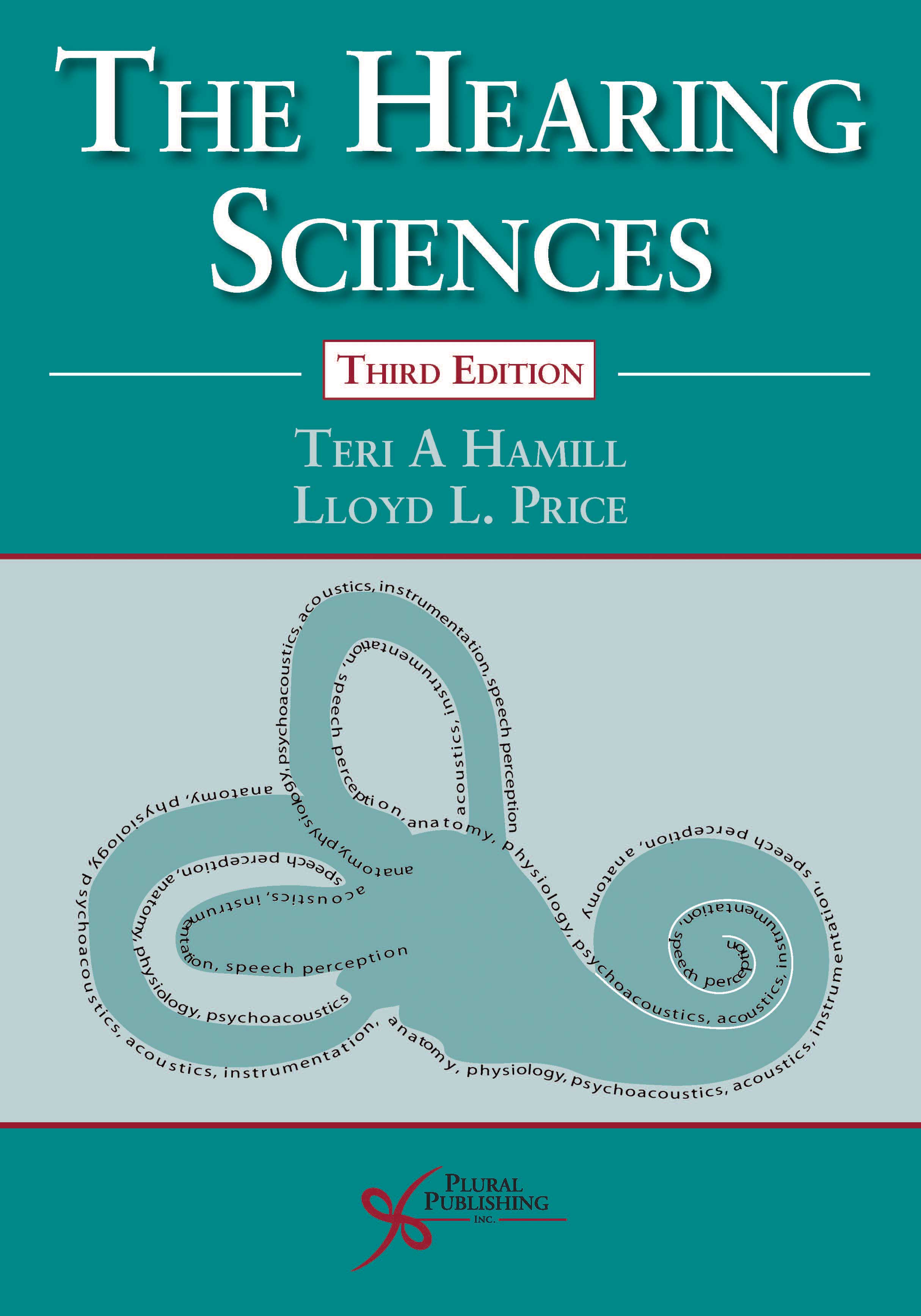
The Hearing Sciences
Third Edition
Teri A. Hamill, Lloyd L. Price
Details: 637 pages, B&W, Softcover, 8.5" x 11"
ISBN13: 978-1-94488-363-8
© 2019 | Available
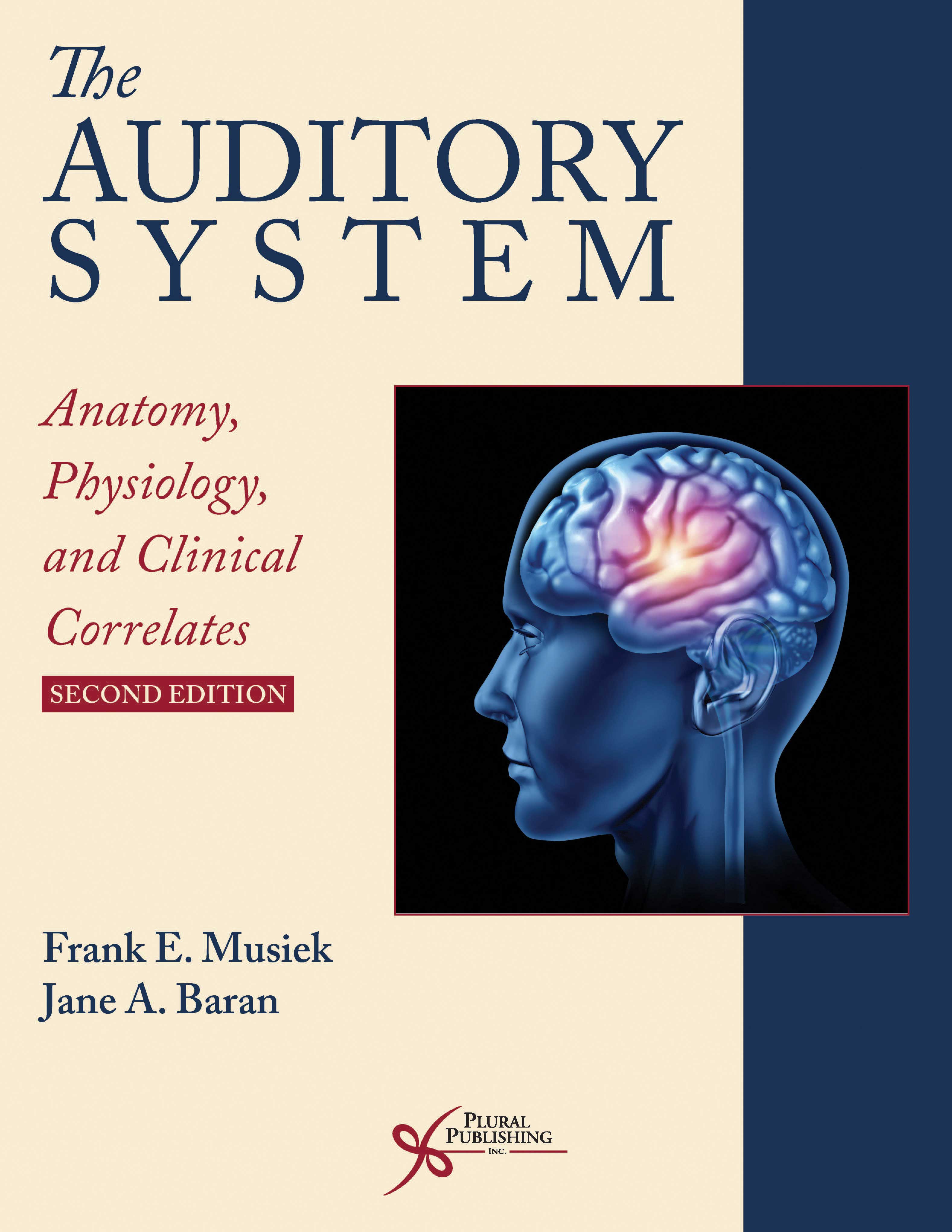
The Auditory System: Anatomy, Physiology, and Clinical Correlates
Second Edition
Frank E. Musiek, Jane A. Baran
Details: 487 pages, Full Color, Hardcover, 8.5" x 11"
ISBN13: 978-1-94488-300-3
© 2020 | Available
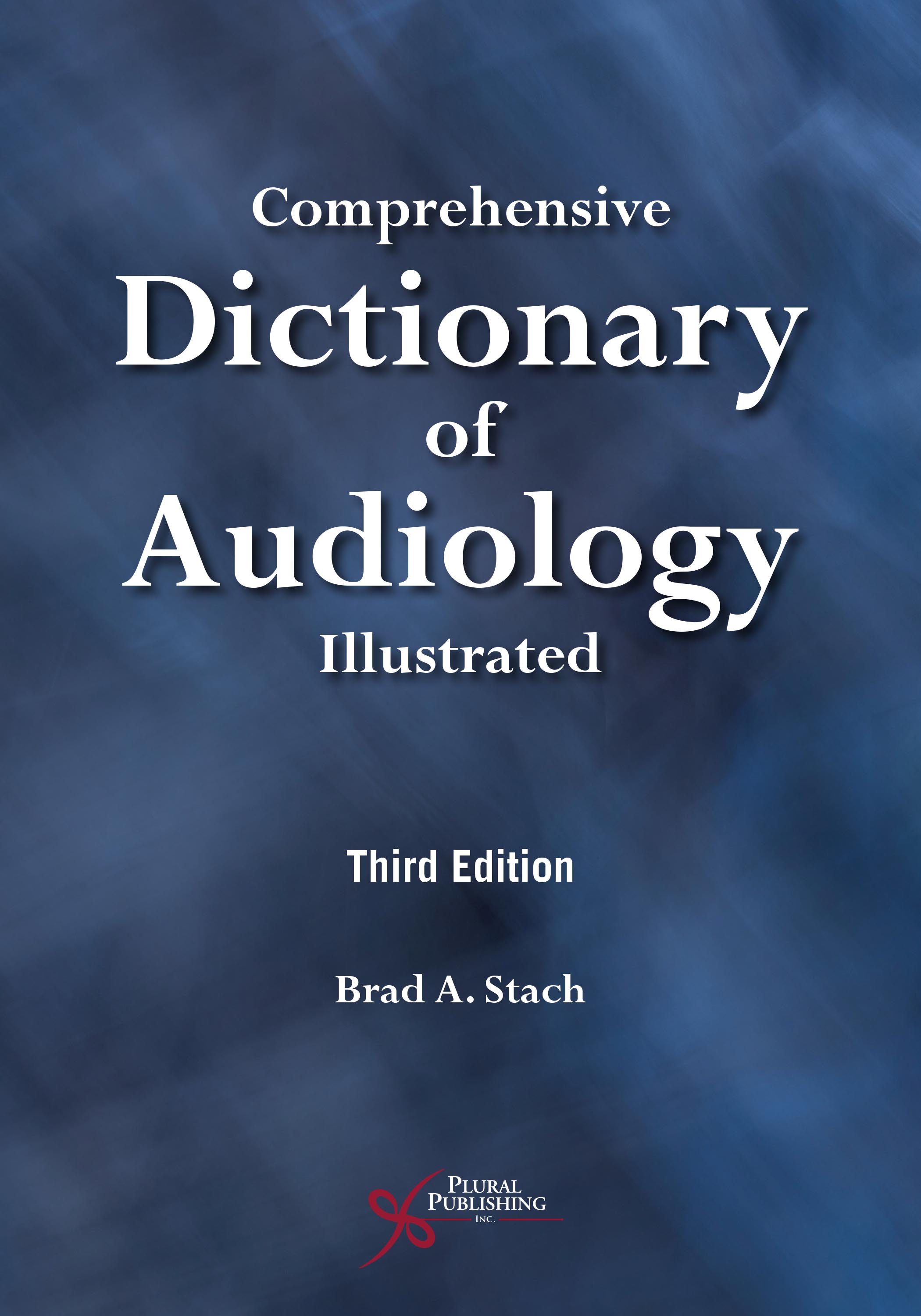
Comprehensive Dictionary of Audiology: Illustrated
Third Edition
Brad A. Stach
Details: 349 pages, B&W, Softcover, 7" x 10"
ISBN13: 978-1-94488-389-8
© 2019 | Available
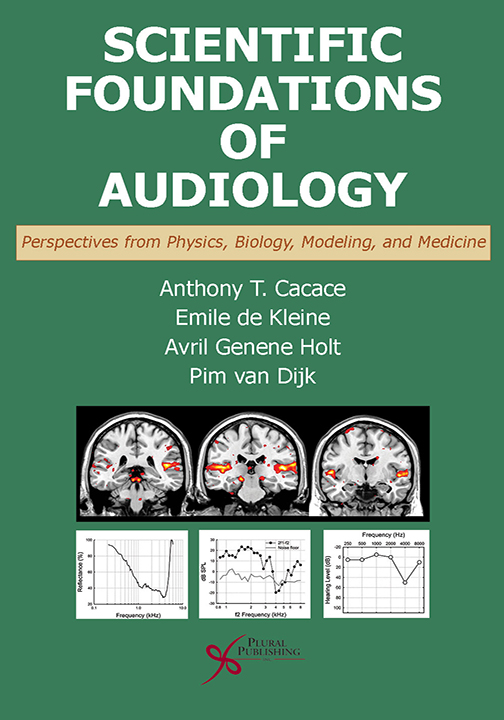
Scientific Foundations of Audiology: Perspectives from Physics, Biology, Modeling, and Medicine
380 pages, B&W, Hardcover, 7" x 10"
Anthony T. Cacace, Emile de Kleine, Avril Genene Holt, Pim van Dijk
Details: 380 pages, B&W, Hardcover, 7" x 10"
ISBN13: 978-1-59756-652-0
© 2016 | Available
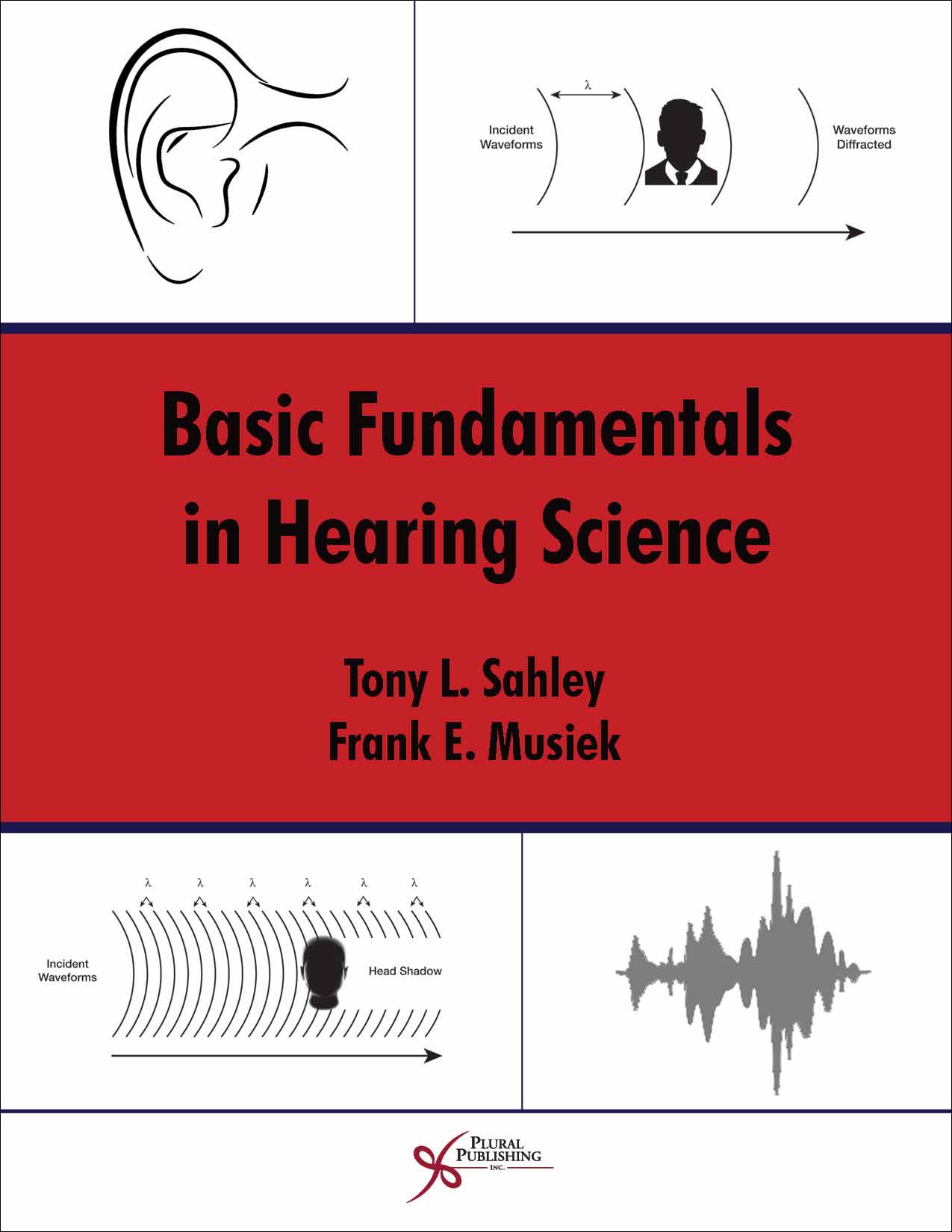
Basic Fundamentals in Hearing Science
First Edition
Tony L. Sahley, Frank E. Musiek
Details: 704 pages, B&W, Hardcover, 7" x 10"
ISBN13: 978-1-59756-549-3
© 2016 | Available
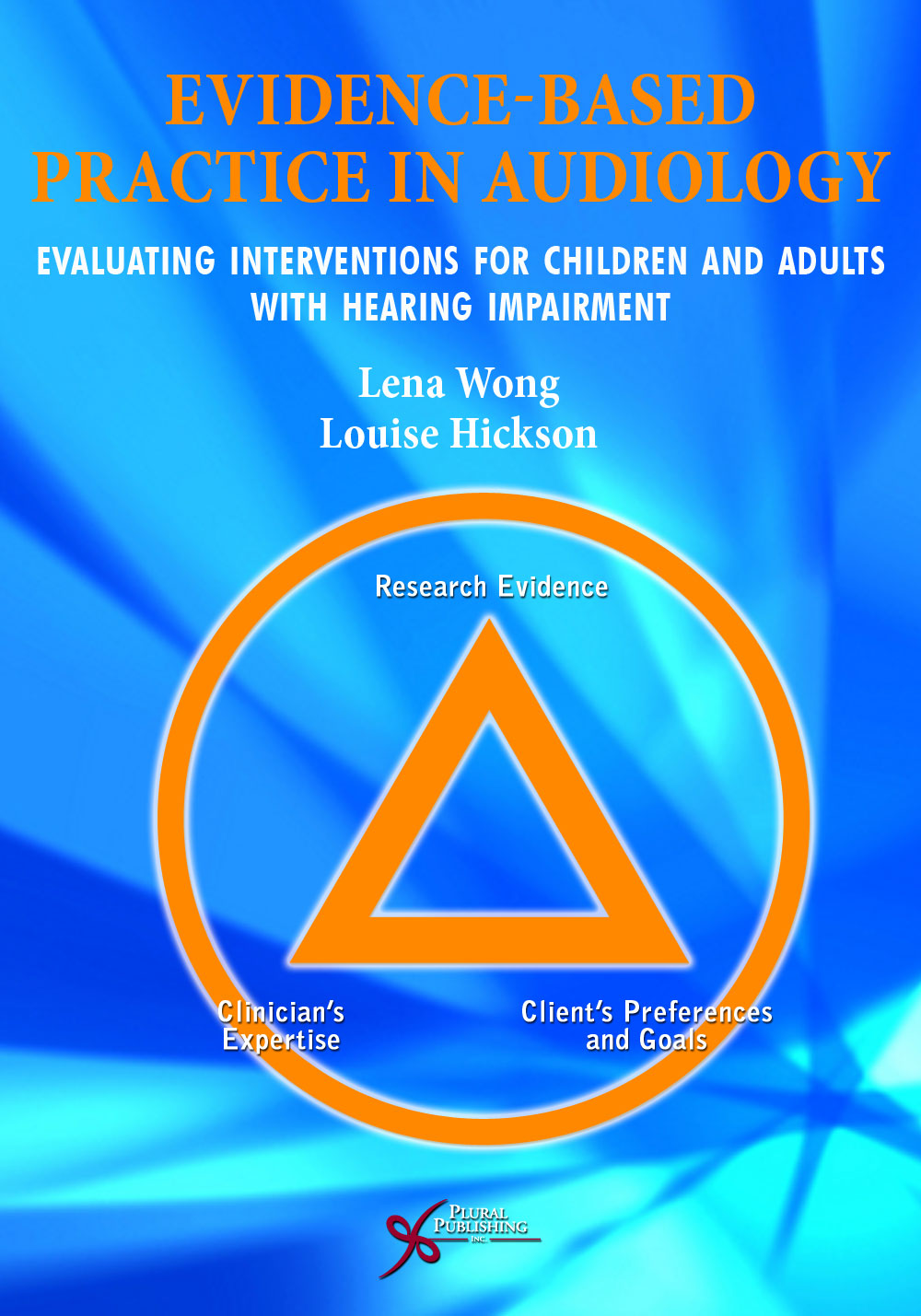
Evidence-Based Practice in Audiology: Evaluating Interventions for Children and Adults with Hearing Impairment
First Edition
Lena Wong, Louise Hickson
Details: 356 pages, B&W, Softcover, 7" x 10"
ISBN13: 978-1-59756-419-9
© 2012 | Available
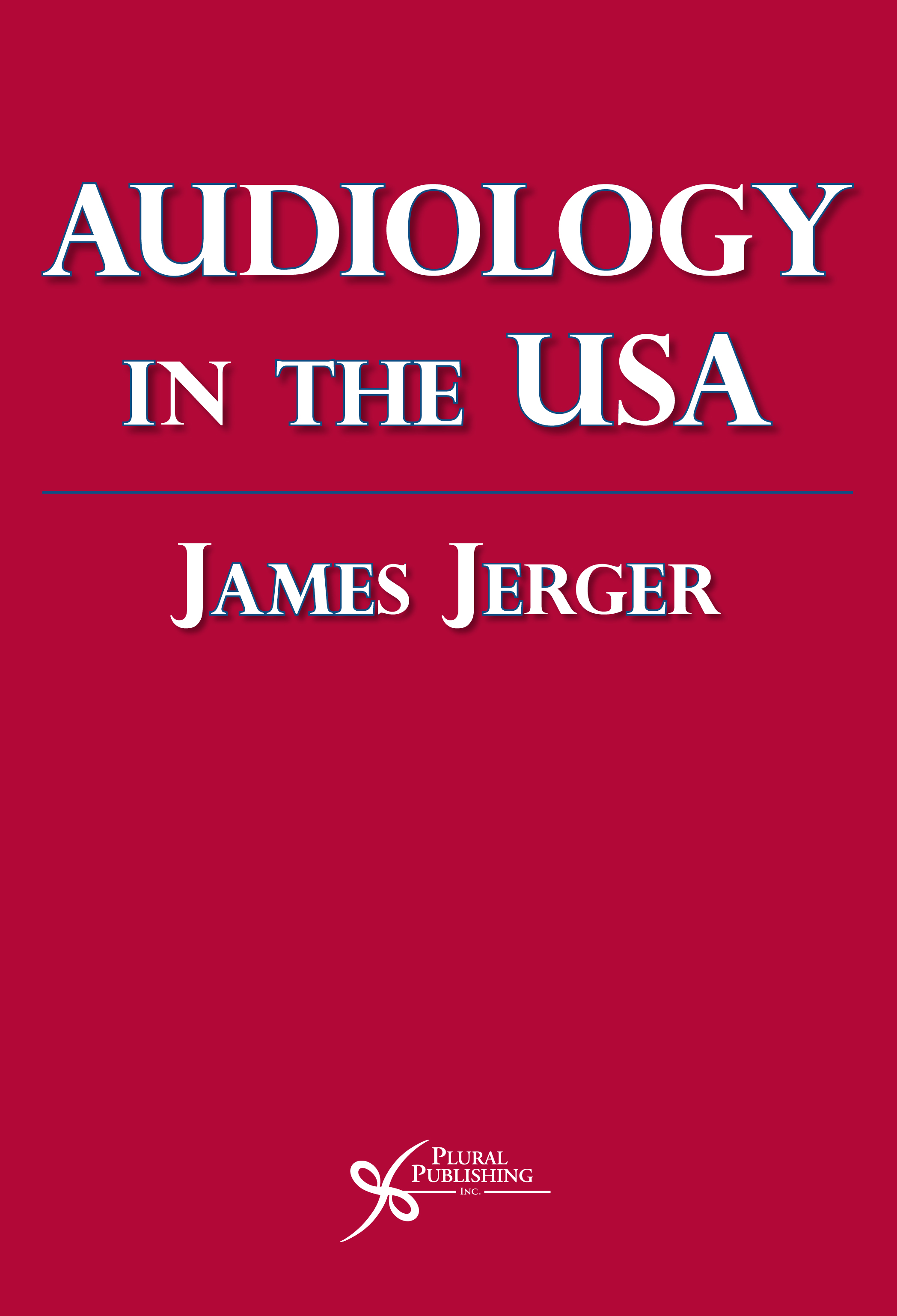
Audiology in the USA
First Edition
James Jerger
Details: 128 pages, B&W, eBook
ISBN13: 978-1-59756-868-5
© 2009 | Available
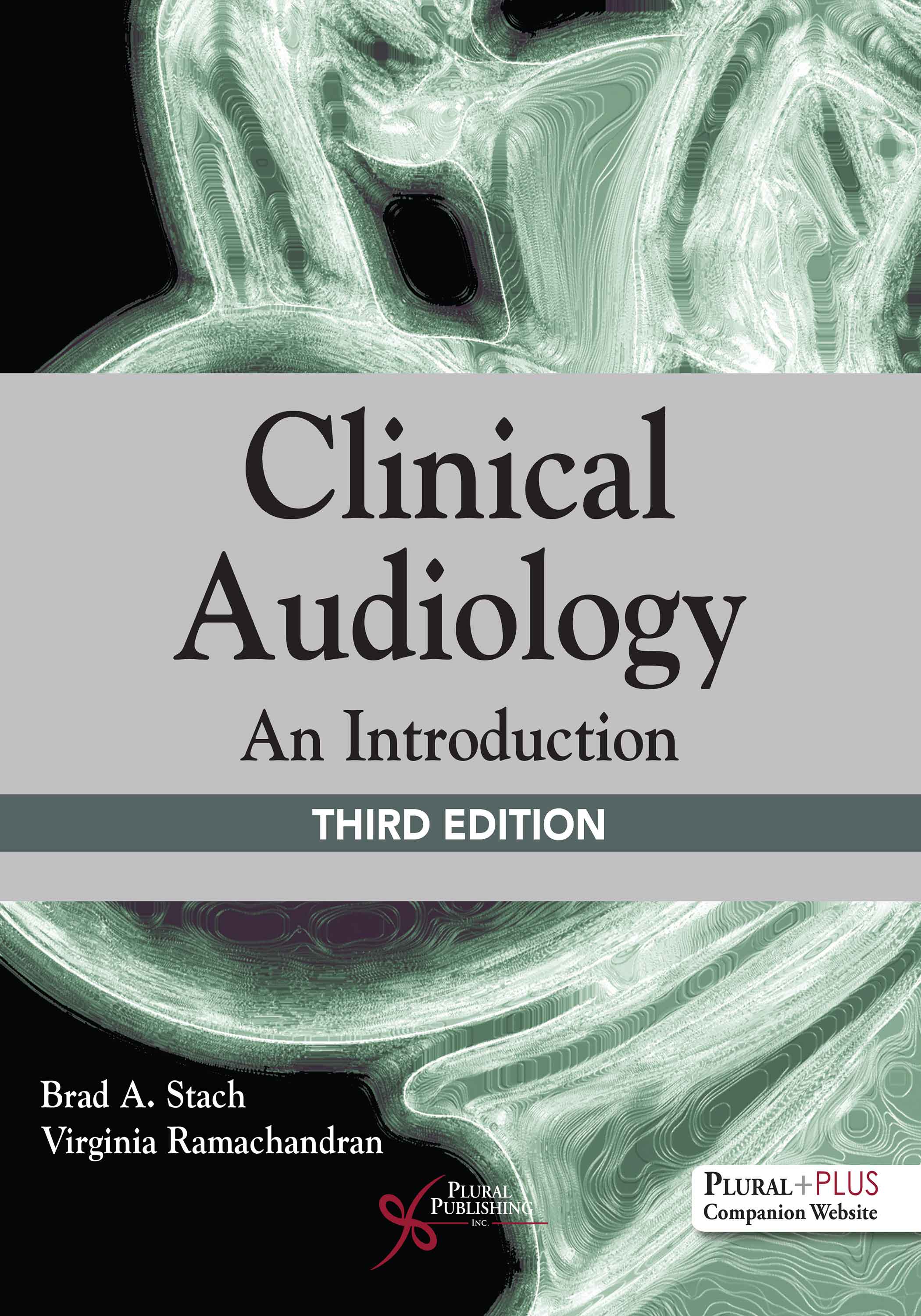
Clinical Audiology: An Introduction
Third Edition
Brad A. Stach, Virginia Ramachandran
Details: 575 pages, 2-Color, Hardcover, 8.5" x 11"
ISBN13: 978-1-94488-371-3
© 2022 | Available
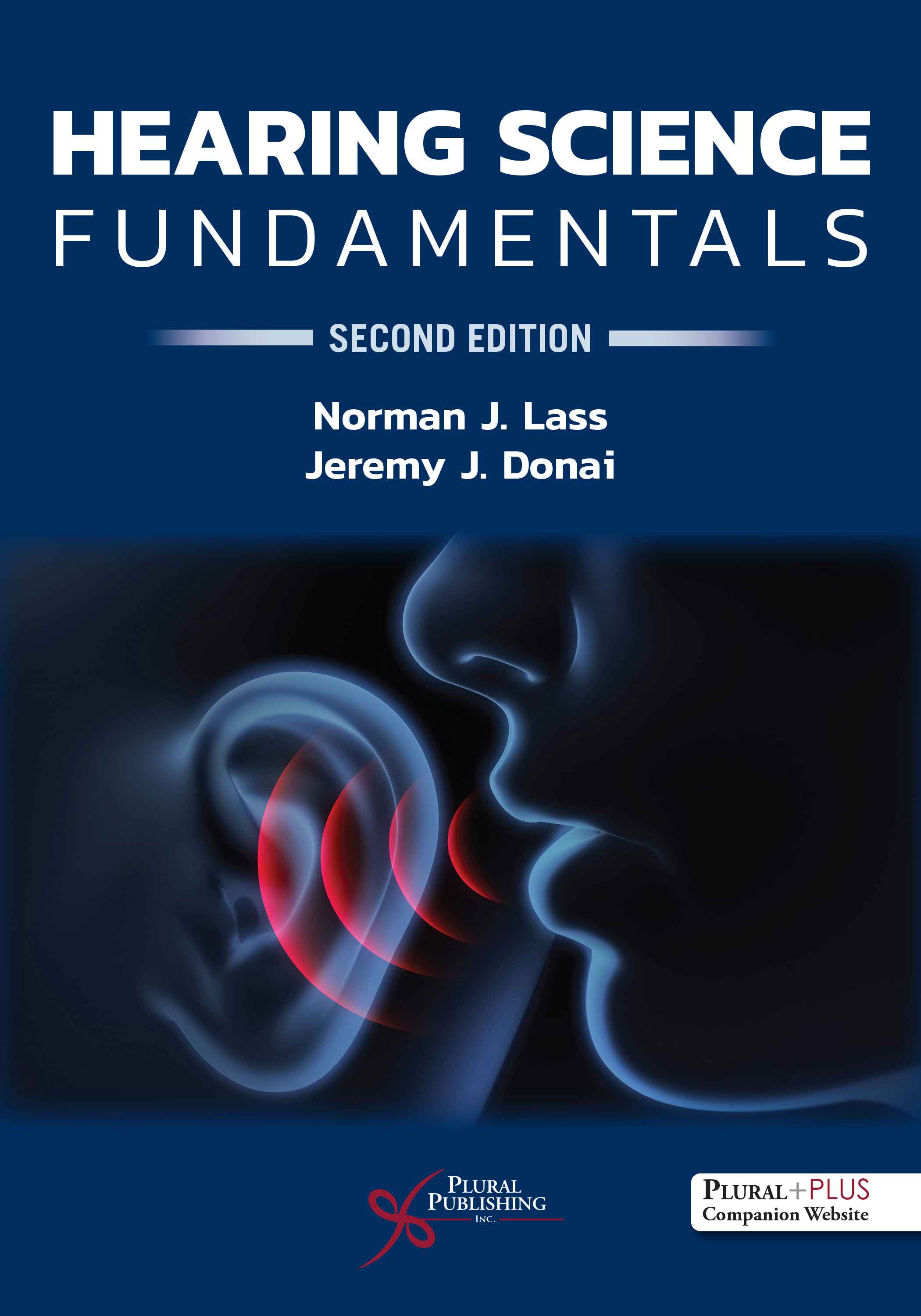
Hearing Science Fundamentals.
Second Edition
Norman J. Lass, Jeremy J. Donai
Details: 370 pages, 2-Color, Softcover, 7" x 10"
ISBN13: 978-1-63550-328-9
© 2023 | Available


